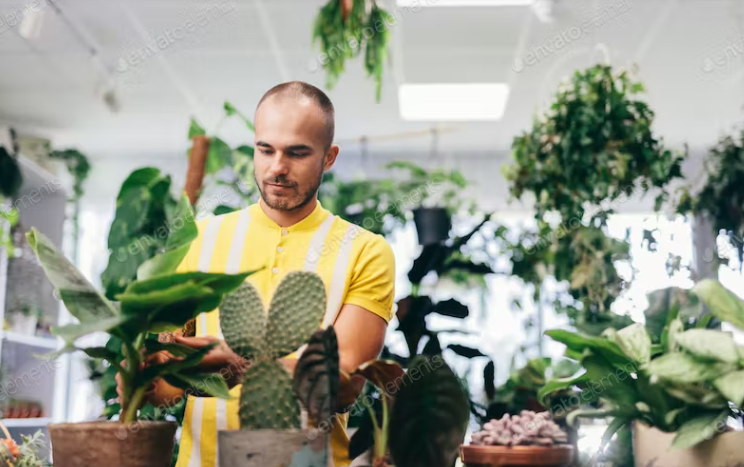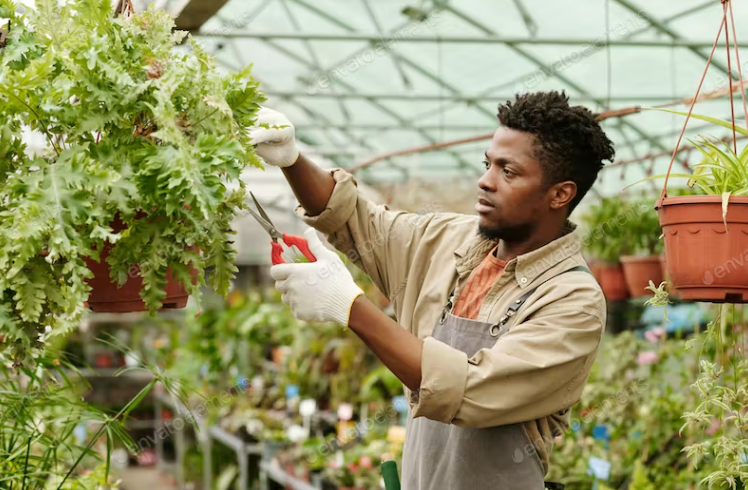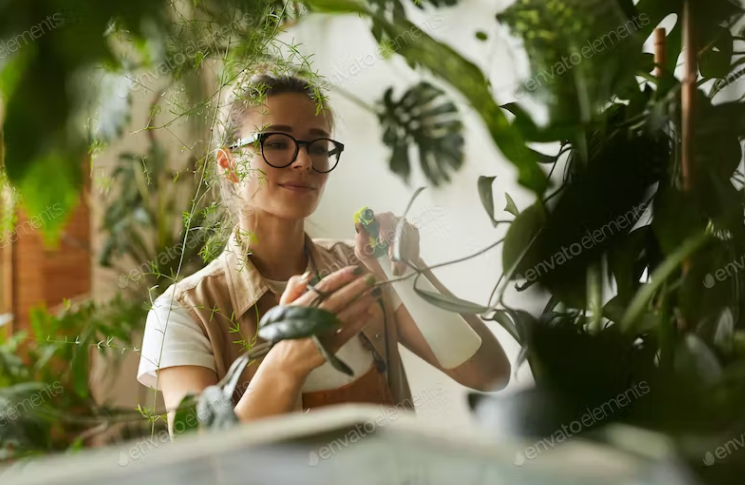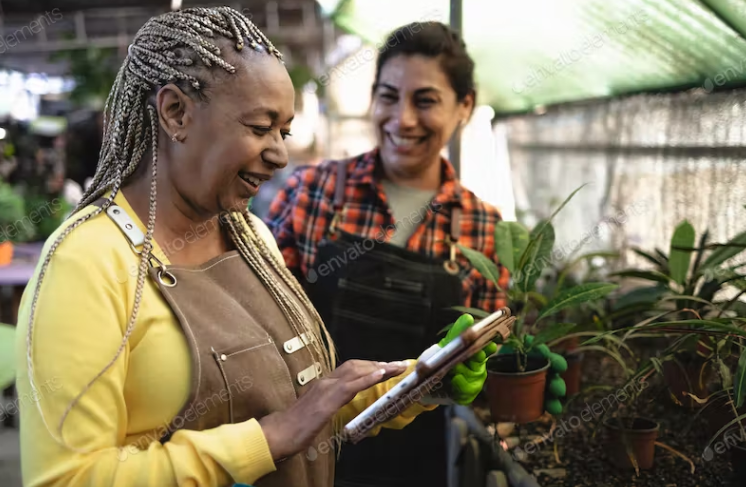
If you’re looking for the best apps to help care for your plants, you’ve come to the right place. From watering schedules to tips on keeping your plants happy, apps about plant care can help you tackle all these problems. In this article, we’ll show you the top 10 plant care apps to help keep your plants healthy and thriving.
Why Do We Need To Take Care of Plants?
We all know that plants are essential to providing food, oxygen, and much more. But why do we need to take care of them? Here are a few reasons:
- Plants are an important factor in our ecosystem. They help to purify the air, stabilise the soil, and provide homes for wildlife.
- Plants produce oxygen that we need. They also help to regulate the amount of carbon dioxide in the atmosphere.
- Plants provide us with food, medicine, and other products that we use daily.
- Plants help to beautify our world and make it a more pleasant place to live.
- Plants play an essential role in the water cycle, helping to purify water and prevent flooding.
- Plants help to control pests and diseases, making them essential for agriculture.
The Benefits of Plants

Humans have been using plants for food, shelter, and medicine for centuries because they provide us with renewable resources that can be used to create various products. There are many benefits to using plants, such as:
1. Plants improve air quality.
Plants play a vital role in our lives, providing us with the air we breathe and the food we eat. They also offer many other benefits that often go unnoticed.
For example, plants help to improve air quality by absorbing carbon dioxide and releasing oxygen back into the atmosphere. They can also help to reduce noise pollution and provide us with shade and privacy.
In addition, plants help to cool the environment by evaporating water from their leaves, which can be a great relief on hot summer days. And finally, they add beauty and colour to our world, making it a more pleasant place to live in.
2. Plants help boost your mood and mental health.
Plants are crucial to life because they provide food, oxygen, and shelter. However, plants also offer many other benefits that are often overlooked.
One of the most significant benefits of plants is their ability to improve our moods. Studies have found that plants can also help reduce stress levels. The study found that people who were in a room with plants had lower levels of the stress hormone cortisol than those who were in a room without plants. Plants can also help reduce noise levels and create a more peaceful environment.
In addition to their mood-boosting effects, plants also offer several health benefits. For example, they can help purify the air by absorbing harmful toxins and releasing oxygen. Plants can also help reduce noise pollution and promote better sleep.
3. Plants can improve your physical health.
According to a study by the American Society of Horticultural Science– having plants in your home can improve your physical health. The study found that people who had plants in their homes had lower blood pressure and heart rates than those who did not have plants in their homes. Plants can also help purify the air, which can help improve your respiratory health.
The Best App For Plant Care

1) PictureThis
If you’re someone who likes to have a green thumb but doesn’t always know how to take care of your plants, then the PictureThis app is for you! With this app, all you need to do is take a picture of your plant, and it will tell you everything you need to know about it.
The app is free to download and easy to use. You can take a picture of your plant or choose one from your photo gallery, and once you have a picture of the plant, the app will analyse it and provide information about the plant species, watering needs, light requirements, and more.
The PictureThis app is a great way to get started with plant care. It’s simple to use and can help keep your plants healthy and happy.
2) Planta
The Planta app is an excellent option. Here are some of the reasons why:
First, the Planta app can help you keep track of your plants’ watering needs. You can input how often each plant needs to be watered, and the app will remind you when it’s time. This is especially helpful if you have a lot of plants or if you’re forgetful.
Second, Planta can provide you with information on each plant species. This includes things like ideal watering frequency, sunlight needs, and more. This is helpful whether you’re a plant beginner or an expert.
Finally, Planta is just generally user-friendly and easy to use. The interface is clear and straightforward, and the app is designed to be as simple as possible.
3) Florish
If you’re one of those people who have trouble caring for their plant on a day-to-day basis, then you’re in luck. There’s now an app for that. Florish is a new app that helps you take care of your plants. It gives tips on how to water them, how much sunlight they need, and what kind of fertiliser to use.
The best part about Florish is that it takes the guesswork out of plant care. No more wondering if you’re watering your plants too much or not enough. The app will tell you exactly what your plants need.
Another great feature of Florish is that it keeps track of your plants’ growth. You can see how big they’ve gotten over time and track their progress. This is especially helpful for tracking how well they’re doing and whether or not they need more or less attention.
4) Blossom
The Blossom app is here to help you turn over a new leaf – quite literally. This app was designed to help users take care of their plants and ensure they stay healthy. Here are some of the reasons why the Blossom app is excellent for plant care:
The app provides users with personalised tips and advice on how to care for their plants. It also sends a plant care reminder when it’s time to water or fertilise your plants.
The app has a library of over 50,000 plants, so you can easily find information on the specific type of plant you have. The app also allows users to track their progress and see how their plants are doing over time.
5) PlantSnap
If you’re looking for an app to help you with your plant care, PlantSnap is an excellent option. Here are some of the reasons why:
- PlantSnap is a plant identifier app. So if you’re unsure what kind of plant you have or what care it needs, PlantSnap can give you that information.
- PlantSnap can provide tips on how to care for your plants. So if you’re unsure how often to water them or what kind of fertiliser they need, PlantSnap can help.
- PlantSnap is a convenient way to keep track of your plants. You can add them to your “snapshot” collection and refer back to them later. This is especially helpful if you have a lot of plants or if you move them around often.
6) Gardenia
If you have a green thumb, or even if you just appreciate the beauty of plants, the Gardenia App is a must-have. This app is designed to help you take care of your gardenias, and it does so in several ways.
First, the Gardenia App provides detailed information on how to care for your plants. This includes tips on watering, fertilising, and pruning. The app also includes a plant care calendar, so you can track when your plants need attention.
Second, the Gardenia App is a plant identifier that helps you identify your plants’ problems. If you see something wrong with one of your gardenias, you can simply take a photo and submit it to the app. The app will then provide you with possible causes and solutions.
Finally, the Gardenia App is simply beautiful to look at.
7) ThePlantMe
If you’re one of those people who can’t seem to keep a plant alive, no matter how hard you try, then the ThePlantMe app is for you. This plant app is designed to help you care for your plants and keep them alive.
The ThePlantMe app is easy to use and helps you remember to water your plants, give them sunlight, and fertilise them. It also gives you tips on how to care for specific types of plants.
The best part about the ThePlantMe app is that it’s free! So if you’re looking for a reason to download it, that’s one. But even if the cost wasn’t an issue, this app would still be worth it because of all the benefits it offers.
8) LeafSnap
LeafSnap is the perfect app for people who grow or want to grow plants. With this app, you can record the various aspects of your plant and upload them virtually anywhere. Here are the reasons why it is suitable for you and your plants!
1. LeafSnap can help you identify plants. If you don’t know what kind of plant you have, LeafSnap can help you figure it out. Take a picture of the leaf, and the app will give you a list of possible matches.
2. LeafSnap can tell you how to care for your plant. Once you’ve identified your plant, LeafSnap will provide care instructions specific to that plant species.
3. LeafSnap is free. There’s no need to spend any money on this app – it’s free to use.
Overall, LeafSnap is an excellent option if you’re looking for an app to help you take care of your plants.
9) My Soil
This gardening app helps you take care of your plants. It provides information about your soil, including its pH level, nutrient content, and moisture levels. This information can help you determine what your plant needs to thrive.
The app also has a feature that allows you to track your plant’s growth over time. This can help assess the effectiveness of your care routine. Additionally, the app offers tips on how to take care of your plants best.
Overall, My Soil is a helpful tool for anyone who wants to take better care of their plants. The app’s features can help you create a customised care routine for your plants to optimise their growth and health.
10) Plantifier
The Plantifier app is for those who have difficulty keeping plants alive because it helps you identify the natural plants and what care information to provide.
Here’s how it works: you take a photo of the plant in question and upload it to the app. Then, Plantifier uses image recognition technology to identify the plant and provide information about its watering needs, light requirements, and more.
The best part? The app is free to download and use. So if you’re finally ready to become a plant parent, there’s no excuse not to try Plantifier.
Conclusion

In conclusion, using caring plant apps to care for plant care is an excellent tool for those who want to keep their plants healthy and happy. It is easy to use and has many features that make it worth the price. By using the app, you can track your plant’s progress and ensure that it gets the care it needs.
FAQs
How do I know what my plant needs?
To know what your plant needs, you need to understand the basics of plant care. Plants need water, light, and air circulation, for starters. They also need a little fertiliser now and then.
The first step in understanding what your plant needs are to read up on the basics of plant care. The next step is to do a little research on the type of plant you have and its specific requirements.
Is the Plantin app worth it?
The Plantin app is an excellent tool for people who are not very experienced with design and want to create professional-looking posters. It is also a good option for people who don’t have time to learn how to use Photoshop or Illustrator.
The plant identification app makes it easy to create posters, flyers, cards, invitations, and other designs. You can upload your photos or choose from the library of high-quality images that Plantin has available. The app also has templates for different designs, so you don’t have to worry about starting from scratch.
Why is my plant turning yellow?
There are several reasons that plants may turn yellow. It is important to note that many of these reasons are not irreversible and can be solved with a little bit of effort.
Plants need sunlight to grow, so the first step is to ensure the plant is near a window or in an area where it can get enough light. If this does not work, you may want to consider moving the plant or getting a grow light for it.
Some plants are sensitive to temperature changes and will turn yellow if they are too cold or too hot. You may need to adjust your thermostat accordingly if this is the case.
It is also possible that your potting soil has gone wrong and needs replacing with fresh soil. This can cause nutrient deficiencies which will lead to yellowing.


